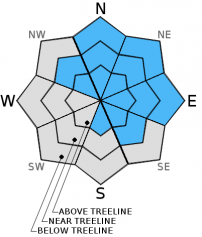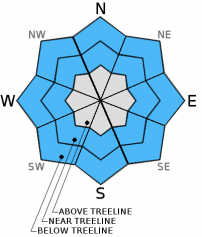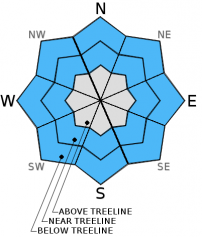| Friday | Friday Night | Saturday | |
|---|---|---|---|
| Weather: | Mostly cloudy with scattered snow showers | Partly cloudy becoming clear overnight | Sunny |
| Temperatures: | 11 to 18 deg. F. | 1 to 7 deg. F. | 18 to 25 deg. F. |
| Mid Slope Winds: | West | North shifting to northeast after midnight | East |
| Wind Speed: | 15 to 20 mph with gusts to 35 mph | 15 to 20 mph with gusts to 35 mph increasing to 25 to 30 mph with gusts to 45 mph | 25 to 35 mph with gusts to 55 mph |
| Expected snowfall: | up to 1 | 0 | 0 |
| Friday | Friday Night | Saturday | |
|---|---|---|---|
| Weather: | Mostly cloudy with scattered snow showers | Partly cloudy becoming clear overnight | Sunny |
| Temperatures: | 9 to 15 deg. F. | -2 to 5 deg. F. | 18 to 25 deg. F. |
| Ridge Top Winds: | Northwest | North shifting to northeast after midnight | East |
| Wind Speed: | 20 to 30 mph with gusts to 45 mph | 25 to 30 mph with gusts to 45 mph increasing to 35 to 45 mph with gusts to 60 mph | 40 to 50 mph with gusts to 75 mph |
| Expected snowfall: | up to 1 | 0 | 0 |




























